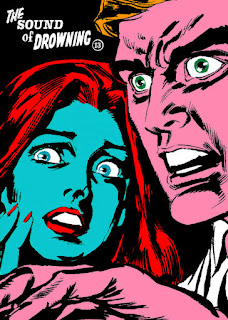Things are looking busy over at Paper Tiger, the sussex based alternative comics outfit. Not only has their editor in chief Sean Duffield finished the excellent War: The Human cost, but they also have a new website and blog.
The new anthology features great work by an international crew of artists, many of whom are based in the Brighton area, people such as Lawrence Elwick, James Parsons and Paul O'Connell to name but three. The edition runs only to 750, so go get yourself a copy before they all disappear. Also £1 of every purchase goes to the Campaign Against the Arms Trade, so you can indulge in comics and do something good at the same time, what more could you ask for!
In other news this interesting project fell on my desk the other morning:
Call for Papers: Sculpture and Comic Art
Conference, Wednesday 16th November 2011
As historical and theoretical interest in comic art continues to grow, we plan to explore the relationship between sculpture and comic art, looking at how formal and thematic concerns migrate, and have migrated across the last hundred years or so, between these practices.
Comic figuration, like caricature, is a regular influence on much modern and contemporary sculpture - allowing the body to be reinvented and restaged in new and fantastical ways beyond anatomical norms.
By the token we can also find the direct appropriation of comic and cartoon characters (often animals or superheroes) in recent installational practices, including those of McCarthy, Cattelan, Dion and Schütte. The role of narrative (sculptural and sequential) is significant here, between the 'gutter' and the gallery, and such co-options are, in turn, echoed in sculpture's intriguing place in many comics and graphic novels, where it is often given special powers and dynamic plot-determining roles within the visual sequential narratives constructed. It has also been caricatured since the earliest cartoon strips and tensions between high and low emphasised.
Finally, as sculptors have turned to comic art, so comic artists (such as Robert Crumb, Chris Ware and David Shrigley) have turned to three-dimensions. This move also reminds us of the power and popularity of the small-scale figurine, and in turn the collectible, to stand as a three-dimensional demonstration of characters articulated in two dimensions, whether on the page or in animated film.
We invite proposals for 25 minute conference papers, from academics and artists from all fields, that focus on any aspect of the above. Please submit a 250 word abstract and short CV to Kirstie Gregory, kirstie@henry-moore.org
Deadline for submissions is Monday 18 July 2011.
Conference, Wednesday 16th November 2011
As historical and theoretical interest in comic art continues to grow, we plan to explore the relationship between sculpture and comic art, looking at how formal and thematic concerns migrate, and have migrated across the last hundred years or so, between these practices.
Comic figuration, like caricature, is a regular influence on much modern and contemporary sculpture - allowing the body to be reinvented and restaged in new and fantastical ways beyond anatomical norms.
By the token we can also find the direct appropriation of comic and cartoon characters (often animals or superheroes) in recent installational practices, including those of McCarthy, Cattelan, Dion and Schütte. The role of narrative (sculptural and sequential) is significant here, between the 'gutter' and the gallery, and such co-options are, in turn, echoed in sculpture's intriguing place in many comics and graphic novels, where it is often given special powers and dynamic plot-determining roles within the visual sequential narratives constructed. It has also been caricatured since the earliest cartoon strips and tensions between high and low emphasised.
Finally, as sculptors have turned to comic art, so comic artists (such as Robert Crumb, Chris Ware and David Shrigley) have turned to three-dimensions. This move also reminds us of the power and popularity of the small-scale figurine, and in turn the collectible, to stand as a three-dimensional demonstration of characters articulated in two dimensions, whether on the page or in animated film.
We invite proposals for 25 minute conference papers, from academics and artists from all fields, that focus on any aspect of the above. Please submit a 250 word abstract and short CV to Kirstie Gregory, kirstie@henry-moore.org
Deadline for submissions is Monday 18 July 2011.


